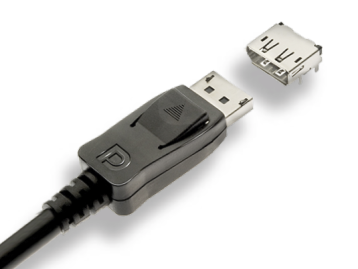Conclusion
Today's announcement by IDT is poised to increase competition in the DisplayPort receiver market, and make it even more obvious to all players involved (including consumers!) that the standard is poised for eventual domination of the PC market. We don't want to make this sound like propaganda, because it's not, but things certainly seem that way to us as nearly everyone in the PC ecosystem has good reasons to push for DisplayPort's victory.
Regarding the adoption rate of the technology, most are predicting it to be much much faster than what happened with DVI, and we'd certainly tend to believe that. Genesis Microchip is currently sampling DisplayPort 1.1 receivers to their customers (including Samsung and Dell which are both releasing products in early 2008), while IDT is slated to start doing so in Q1 2008. They couldn't yet comment on when they expect actual products based on their chips to be released, however, but we'll make a wild guess of 'before the end of next year'.
And as we already mentioned, pretty much every single discrete GPU and IGP (as early as January!) is going to support DisplayPort in 2008. While that obviously doesn't mean every board will have a port, there are no royalties and the port is presumably not only smaller but also cheaper, so we'd certainly predict good market penetration even before DisplayPort monitors become truly mainstream.
Dongles between DisplayPort and a variety of other display standards are also poised to become available in the next 6 months, so compatibility with current hardware shouldn't be a problem either (although we're not sure whether Direct Drive monitors will work that way, but we presume that will be properly indicated once they start coming out).
If IDT delivers on its promises, their solutions seem to be very nicely positioned as replacements for LVDS. And they should also be very competitive with Genesis in non-TV LCDs, although much of that will depend on the actual product details and the two companies' relationships with potential customers. All in all, that kind of market opportunity is certainly a very reasonable growth strategy for them, and we'll be curious to see what happens going forward.Finally, for consumers, it is certainly positive that a major war between HDMI and DisplayPort looks unlikely at this point. Of course, it's not impossible yet - things could change, problems could happen, analysts and industry watchers could turn out wrong. But things certainly look that way, and while it would have been best if there was a single standard for both PCs and Consumer Electronics, this is still unquestionably better than two competing standards in the same segments, truly dividing the market.
We'd like to thank Chad Taggard for the chat on both IDT and DisplayPort, as it obviously formed the basis of this article and encouraged us to look into a number of other facts which have also been included herein. We look forward to seeing how it all turns out in the coming months and years, and wish the best of luck to IDT and their competitors.

The DisplayPort connector and, errr, port.
Comments on this article should go in this forum thread.
